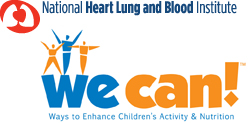


Why should we care about managing our families' weight? There has been a lot of talk lately about how much heavier Americans have been growing since the 1970s.
According to the National Health and Nutrition Examination Surveys (2003-2004), approximately 66 percent of adults are overweight or obese with seventy-two million adult Americans considered obese.
Children have become heavier as well. The percentage of children and teens that are overweight has more than doubled in the past 30 years. However, recent data suggest that the rate of overweight in children did not increase significantly between 1999 and 2006.
This rate, though, remains alarmingly high. About 16 percent of American children ages 2 to 19, or 1 in 6, are overweight. Furthermore, the latest data suggest that overweight and obesity are having a greater effect on minorities, including blacks and Mexican-Americans.
Extra pounds can add up to health problems, often for life. In adults, overweight and obesity are linked to increased risk of heart disease, type 2 diabetes, high blood pressure, certain cancers, and other chronic conditions. Research has shown that overweight children are at high risk of being overweight or obese as adults.
Formerly called adult-onset diabetes, type 2 diabetes is increasingly being seen in children and adolescents, particularly among minority communities. In a recent national study, 58 percent of children diagnosed with type 2 diabetes were overweight.
The American environment
A person's weight is the result of many things working together—genes, metabolism (the way your body converts food and oxygen into energy), behavior, and your environment.
Changes in our environment that make it harder to engage in healthy behavior have a lot to do with our overall increase in weight over the past few decades. For example:
Becoming overweight doesn't happen overnight. It happens over time when the energy we take in by eating is not in balance with the energy we burn from physical activity. However, there are things we can do to prevent overweight and obesity.
We Can!™ is a trademark of the U.S. Department of Health and Human Services.